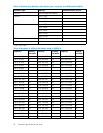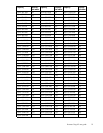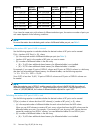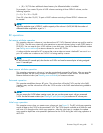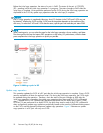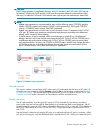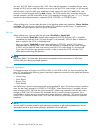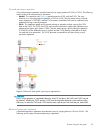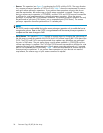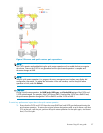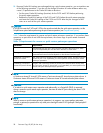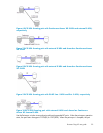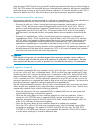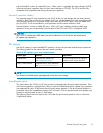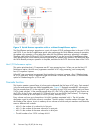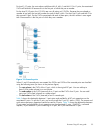
• Reverse. This operation (see Figure 5) synchronizes the P-VOL with the S-VOL. The copy direction
for a reverse pairresync operation is S-VOL to P-VOL. Table 7 shows the requirements for reverse
and quick restore pairresync operations. If you perform these operations on pairs that do not
meet the requirements, the reverse copy or quick restore command is rejected. The pair status
during a reverse resync operation is COPY(RS-R), and the P-VOL and S-VOL become inaccessible
to all hosts for write operations during a reverse pairresync operation. When the reverse
pairresync is complete, the P-VOL becomes accessible. The reverse pairresync operation can only
be performed on split pairs (PSUS status), not on suspended pairs (PSUE status). The reverse
pairresync operation cannot be performed on L2 cascade pairs.
NOTE:
The P-VOL remains read-enabled during the reverse pairresync operation only to enable the host to
recognize the volume. Data on the P-VOL is not guaranteed until the reverse pairresync operation is
complete and the status changes to PAIR.
• Quick Restore.Thisoperation(Figure 5) speeds up reverse resync by changing the volume map in
the disk array to swap the contents of the P-VOL and S-VOL without copying the S-VOL data to the
P-VOL. The P-VOL and S-VOL are resynchronized when update copy operations are performed
for pairs in PAIR status. The pair status during a quick restore operation is COPY(RS-R) until the
volume map change is complete. The P-VOL and S-VOL become inaccessible to all hosts for write
operations during a quick restore operation. Quick restore cannot be performed on L2 cascade
pairs or on suspended pairs (PSUE status). Table 7 shows the requirements for reverse and quick
restore pairresync operations. If you perform these operations on pairs that do not meet the
requirements, the reverse copy or quick restore command is rejected.
26
Business Copy XP (BC) for the Array



